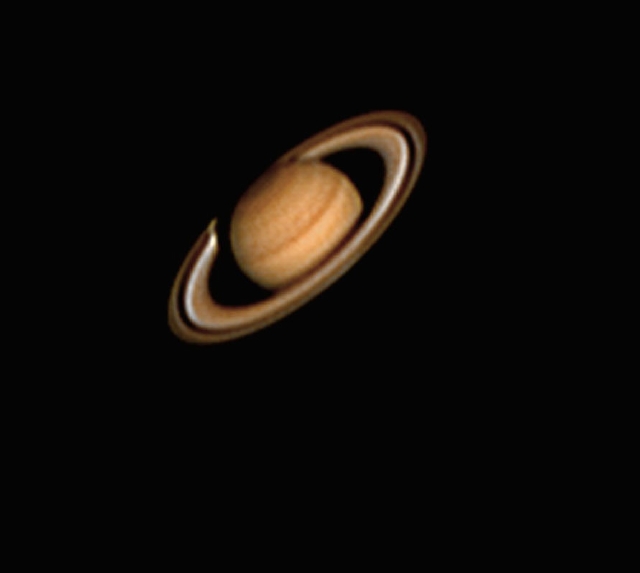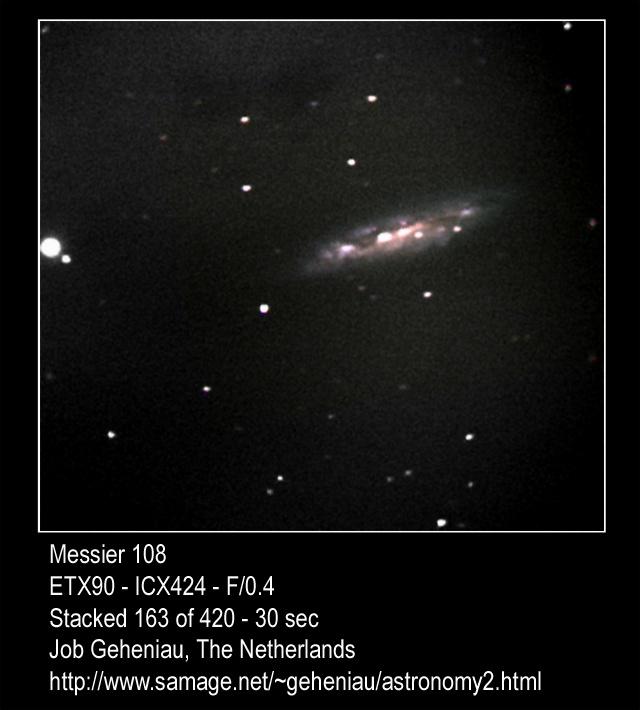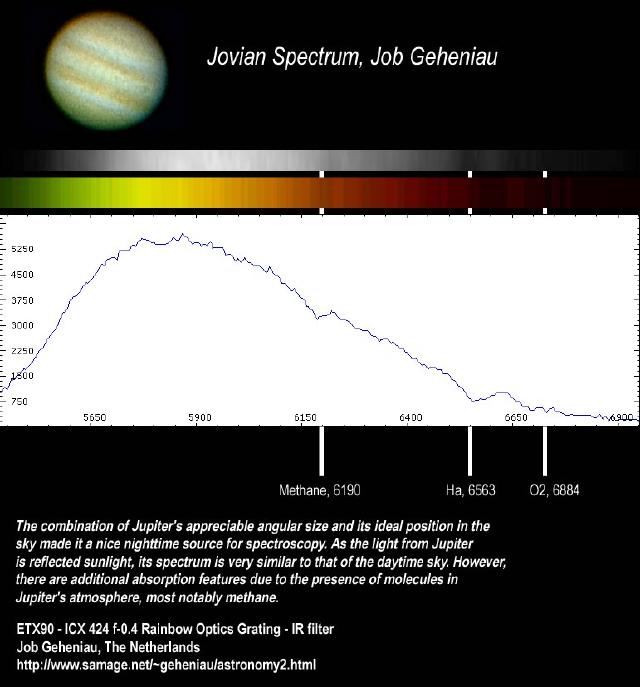Last updated: 22 April 2005
|
Last updated: 22 April 2005 |
This page documents astrophotography comments, tips, and photos. Contributions welcome. Be certain to see the other articles on the main Astrophotography page.
Subject: Camera adapter for LXD 55 SC8 question Sent: Tuesday, April 19, 2005 16:29:10 From: Javier Villarreal Nuez (JVILLARREALP@gruma.com) Abusing of your wisdom and good will. I have a general question, hope you can help me. Do you know what is the size of the thread of a T-Ring?. Is it 42mm?. I have been asking many people and stores including scopetronix, adorama etc about a step ring I need to attach my coolpix 5400 to my variable tele-Extender but no body knows or no body wants to answer, that is why I'm bothering you. Scopetronix has a special kit for the coolpix 5400, but it is rather expensive and since I already have the tele-Extender which accepts a T- threaded ring, I figured I only need the correct convertion ring from my coolpix 5400 to a "T" thread. That is the reason of my question. First I need to know what the "T" -thread size is and then the question of the million dollars "What is the size of the thread on the coolpix 5400?". Anything you can throw at me will be of much help Thank you very much in advace and have a very good night. Javier Villarreal PS: hope you remember me, by my pictures of mars.Mike here: It does appear to be a 42mm. As to the Coolpix itself, don't know.
And:
By the way I changed my coolpix 5000 for 5400. Do you know where I can find people that have built adapters for it ?. Thank you again and have a greaat day !! Javier ...Mike here: Scopetronix is still the best choice.
Subject: Coolpix 4500 videos Sent: Tuesday, April 12, 2005 07:45:07 From: Robin Woods (r.woods.uwinnipeg.ca@ds1.uwinnipeg.ca) I am using a Coolpix 4500 on a Televue Pronto for astrophotography. I have tried taking videos of Juptier and Saturn with a view to stacking in Registax. However Registax does not recognise the video format - nor do Photoshop Elements 2 and Photoshop 7. I can get the frames by scrolling through in Quicktime and copying them one at a time into PS elements - but to do more than 20 or 30 takes forever!. Do you know if others have had this problem and if there is a solution. Sincerely, Robin Woods Robin A. Woods Gatineau QC CanadaMike here: You will likely need a QuickTime to AVI converter. If you have a Macintosh you could probably use Applescript to get the individual frames from QT (although I haven't tried that).
And:
Thanks for the suggestion - I have a PC but can get access to a Mac if I need to. Robin WoodsMike here: If you have QuickTime Pro ($30) you can export to AVI (at least on a Macintosh; should be the same with QTPro on Windows).
And:
Yes. I did some research on QT last night and came to the same conclusion. I will get a copy of QT Pro for Windows . My video frames are only 320x240 so that images of Jupiter and Saturn through my Pronto (EFL = 480 mm with a 5x Barlow and 18 mm eyepiece) are small - but better than nothing. I could do with more focal length for planetary imaging but my wife forbids me to even think of another telescope ( I also have 6" F5 and 8" F6 Newtonians). Thanks again, Robin WoodsMike here: Also, GraphicConverter (Mac only shareware) can save as individual frames! So you would get individual files that could be processed.
Subject: ETX focal reducers Sent: Sunday, April 10, 2005 10:49:32 From: Dean Mamalakis (DMamalakis@epstein-isi.com) Terrific site! I have been following it for a number of years now. I was wondering if anyone out there has tried using a focal reducer with an etx 90 and an APS-C dSLR camera at prime focus (Canon Digital Rebel). I want to use my existing scope for an upcoming total solar eclipse. With a 35mm film camera, I know I can image a good disk and 1 to 2 solar radii of the corona and wish to explore a dSLR option over the film camera. The smaller format requires a focal reducer to yield approximately the same results. It seems neither the scopetronix reducer nor the Atik 0.5 focal reducer will not produce a focal plane large enough for this size format (though I can't say for sure) and that neither Meade SCT focal reducers work, judging from feedback articles on your web-site. The only possibility seems to be, based on feedback articles, the Shutan wide field adapter. Is it possible to remove the focal reducer portion of the Shutan product and mount it inside the Meade #64 camera adapter? Will it fit, albeit perhaps without any treaded attachment? Has anyone used the wide field adapter with any success with a dSLR? I don't like the diagonal portion of the image train if I were to use the WFA and a 1 " nosepiece to the dSLR and would like a more solid attachment (hence the #64 camera adapter). Dean Mamalakis E: dmamalakis@epstein-isi.com E: dmamalakis@annex5.netMike here: Interesting thought but I have my doubts about it working.
Subject: Celestron's Sent: Friday, April 1, 2005 16:19:27 From: ROBERT Derouin (bobcath28@msn.com) I was wondering if you have any thoughts or personal opinions on Celestron's digital planetary imager!I don't see it advertised to often and I wondered if it is supposed to give better results than Meade's LPI. Is the stacking software as easy to use as Meade's and does the imager give better results?? Perhaps some of your website participants can add some feedback!! Thanks,Mike!! Bob Derouin,Johnston,RI
Subject: CCD camera similar to eye Sent: Friday, April 1, 2005 08:50:48 From: Olivier Scherler (os3476@ithink.ch) I'm not sure what real time sensitivity means but the LinLog camera, as its name tells, has a linear and logarithmic response that gives it a dynamic better than the human eye. See the sample picture on this web page: http://www.photonfocus.com/html/eng/cmos/linlog.php Best regards, Olivier Scherler
Subject: CCD camera similar to eye Sent: Thursday, March 31, 2005 06:56:49 From: Steven Abba (sabba@hanson-inc.com) Is there a CCD camera that has real time sensitivity similar to the eye? Can the Meade DSI do this? Steven J. AbbaMike here: Nope. And no.
Subject: Astrophotography with the ETX 125 / Power follow-up Sent: Wednesday, March 30, 2005 07:20:36 From: Stewart Finley (stewart.finley@Verizon.net) Are counterweights required / recommended when using a Canon 300D with the ETX 125 ? If so what do you recommend? Are there any concerns / warranty issues known regarding stress on the motor or gears? Clear skies from Huntington Beach StewartMike here: I don't know how heavy the camera so a counterweight may or may not be required. There are several counterweight articles on the Helpful Information: Astrophotography page. If you break the locks trying to keep the OTA in position with too much weight, there might be a charge to repair.
Subject: Focal Reducer questions Sent: Monday, March 21, 2005 18:28:49 From: tsheets@orionnets.com it's been years since I've emailed, but I've been reading your great site since I got my ETX90-EC 5 or so years ago. Anyway, I have a couple basic questions about focal reducers. I thought you or your fine readers might be able to help. I want to take better CCD images of the moon, planets, etc. Of course the camera is far to much magnification. I understand that the focal reducer increases the field of view. Does it do this by effectively decreasing the focal length of the scope? What "lower cost" focal reducers could be recommended for an ETX 90EC, for use with the LPI? Thanks Mike! TimMike here: Yes, a "focal reducer" has the effect of reducing the telescope's focal length. See the Wide-Field Adapter on the Accessory Reviews: Showcase Products page. Also, Scopetronix has one for the ETX.
Subject: Barlow versus Reducer Sent: Tuesday, March 22, 2005 00:50:19 From: geheniau@xs4all.nl (geheniau@xs4all.nl) Hi Chasiotis and Mike, I saw the picture of mooncrater Theophilus from Chasiotis on your website. But I have one thing to say about that: it's unnecessary when you use a 2*Barlow and a 0.5 focal reducer at the same time. That will only distort the picture. Because you increase the picture twice and at the same time you decrease the picture 2 times. Strange huh? I red that you used a focal reducer and a Barlow for the moonpic. Why? Job Geheniau The NetherlandsAnd:
From: chasiotis elias (elias_chasiotis@stendor.coo.gr) Dear Job You're right, but theoreticaly. Practically the barlow i use ( Celestron Ultima 2X apochromatic) in use with my webcam gives an image (approximately) larger X 2.6. The Atik 0.5 focal reducer actually gives an image smaller appr. X 0.65. When used together both accesories give an image appr. X 1.7!!! So i noticed that this image is brighter, sharper, and more steady in the field. Also the result image is so sharp that can be enlarged X2 and show far more details than a result image captured with the use of the barlow alone. I send you an enlargement of my latest Saturn photo that already appears on Mike's site but more succesfully processed.I was amazed that the equatorial zone has a bright wide V shape due to the absorbtion of light caused by the inner semitransparent ring, a feature which is very difficult to be captured in such low apperture. Of course i know that using both accesories sounds odd but i wrote exactly what i did. Anyway i would prefer to use a barlow alone that would give me an image X1.7! Thanks for your interest. Elias 
Subject: [none] Sent: Saturday, March 12, 2005 13:50:41 From: Jared Cobb (jared@tyscomputers.com) I am a tech working Meade cameras for the telescopes. I have been attempting to get Mr Creedons working on his laptop. I have attempted to install the driver in every way possible and it keeps coming up saying that it is going to use the USB Device driver instead because it is better. I have turned off device driver signing and it will not let me install it. Any help you could give me with device drivers would be great. Jared Ty's Computer's 1200 Sims Way Suite B Port Townsend, WA. 98368Mike here: Also, PLEASE read the Email Etiquette page; your message was originally DELETED UNREAD as SPAM due to the missing Subject. Thanks for understanding.
Subject: Clear skies with ETX after 4 weeks Sent: Monday, February 28, 2005 12:22:05 From: geheniau@xs4all.nl (geheniau@xs4all.nl) The start of 2005 is not good concerning the weather. But yesterday it was very good. Attached 3 nice ETX90 samples: 1) Messier 108 (big long exposure) [deep sky] - I took the time to made a really long exposure2) Mooncrater Theophilius and Madler (small craters, difficult with ETX and Barlow 3) [moon] - Madler just 28 km (11 miles) ! Imagine the distance of the moon! 
3) Spectral analysis of Jupiter [spectral] - Methane to see. 
You still have the best site for the ETX and I still want to share the things which are possible with the ETX90. I hope that more people are willing to go into spectral analysis with the ETX. It's not so hard as you think and the results are nice to get. Methane to see in the Jupiter spectral analysis is just fun! And if you don't want to do spectral analysis I want to say that with the ETX a lot is possible, just take the time to get good pictures. In the beginning I want to do more than 1 object. Now I know that just take the time for 1 object, go for it and know that the universe will wait for the other exposures you want to make. Patience is the keyword. For example, the mooncrater. It's not so hard to make an exposure of the full moon, but try to get the ETX at it's limits. Put a Barlow 3 and a webcam on it and than try to get some nice mooncraters...You'll meet Mr. challenge, but also the Mrs. satisfaction. Greetings Job Geheniau 
Return to the top of this page.
Go to the January-February 2005 Astrophotography - Tips page.
Go to the October-December 2004 Astrophotography - Tips page.
Go to the July-September 2004 Astrophotography - Tips page.
Go to the April-June 2004 Astrophotography - Tips page.
Go to the January-March 2004 Astrophotography - Tips page.
Go to the 2003 Astrophotography - Tips page.
Go back to the Astrophotography Page.
Go back to my ETX Home Page.